Violet EK-Sea Wolf
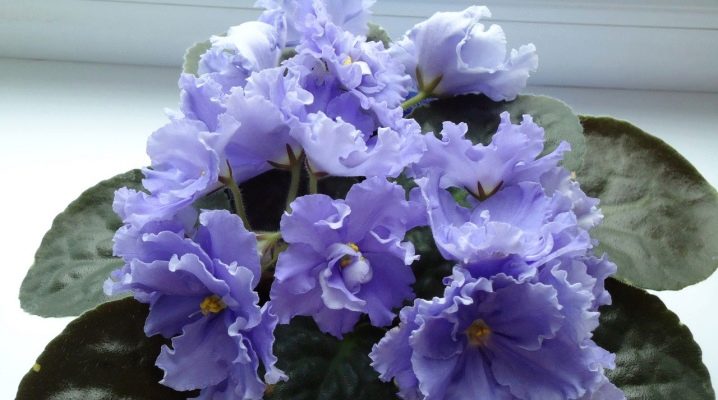
The variety of flowering plants makes it possible to choose a bright and attractive flower that will decorate any part of the house. Indoor violets with lush flowers and large leaves are in great demand. Violet EK-Sea Wolf can decorate any interior.
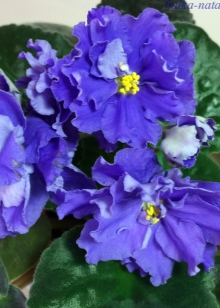
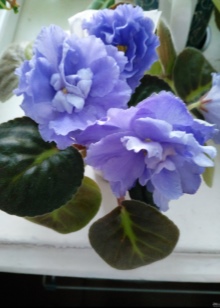

Description of the variety
Strictly speaking, the EK-Sea Wolf flower is not considered a violet. This representative of the flora belongs to the genus of herbaceous plants Saintpaulia, which, in turn, is part of the Gesneriaceae family. Despite this, the name "violet" is actively used and is considered generally accepted. Violet EK-Sea Wolf is considered one of the most attractive and popular varieties belonging to this class of plants. This variety appeared in 2006 and almost immediately became the favorites of many flower growers. The plant was bred through the efforts of the breeder Elena Vasilievna Korshunova. The flower entered her personal collection of the first bred plants.
Due to its high aesthetic qualities, the variety can often be found at thematic exhibitions.
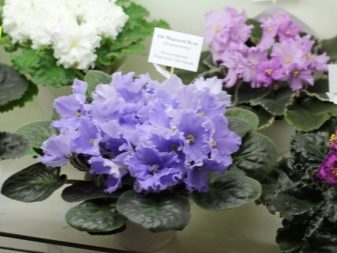

The first thing the plant attracts attention with is the large, lush flowers of a delicate color. Terry lilac petals with a blue tint reach 9 cm in diameter. Large flowers are a characteristic feature of this variety. Even at the first flowering, large sizes can be observed, which vary from 7 to 9 cm. When the plant begins to bud a second time, a textured expressive doubleness appears.
During one flowering, both double and semi-double buds are found. Due to the large size, the peduncles cannot cope with the severity: at the first flowering, the flowers fall on the leaves. In the future, the legs of the peduncles will be compacted and shortened. The dimensions of the rosette are up to 40 cm.
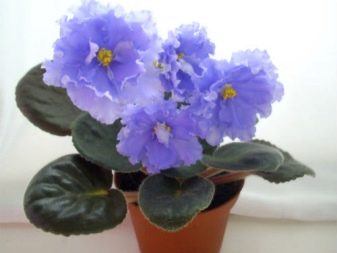
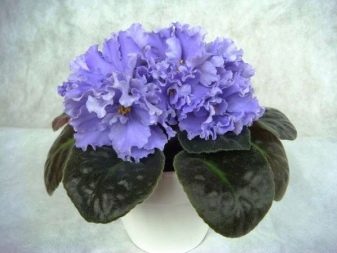
In order for the rosette to be symmetrical on all sides, it is necessary to periodically unfold the violet: in the process of growth, the leaves and flowers are stretched towards the sun.
Violet Sea Wolf has large, deep green leaves that surround the plant. Representatives of this family are characterized by the presence of small villi that densely cover the surface of the leaves, and this variety is no exception. The shape of the leaves is standard: round, resembling a heart. As they grow and develop, they begin to gradually bend inward, but the young leaves are even.
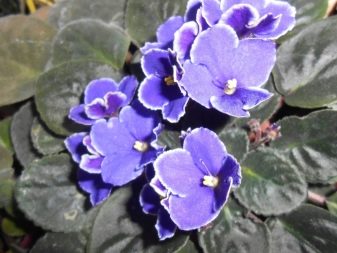

How to grow?
Container selection
Experts recommend choosing a small pot for the plant. Too much capacity will negatively affect the development of the plant, and all its strength will go to the growth of the root system. In addition, the violet will not take up much space. For young flowers, pots with a diameter of no more than 5-6 cm are great. Older plants are chosen in more spacious containers: from 7 to 9 cm. For large violets, pots up to 13 cm are purchased.
It is not difficult to choose a pot of a suitable size on your own, adhering to the following rule: the size of the container should be three times less than the diameter of the outlet. Considering the large assortment of containers in horticultural stores, choosing the right option is not difficult.
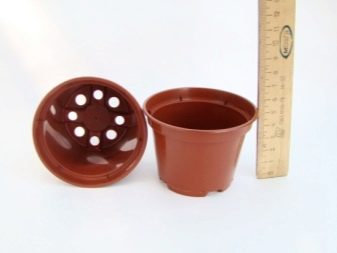
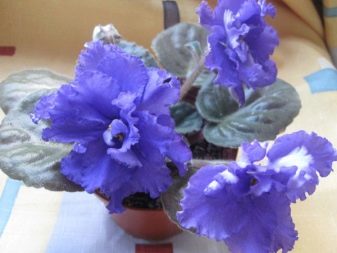
The soil
The best soil for home violets is a ready-made, balanced earthy mixture that is sold in almost any specialty store. The composition is saturated with all useful microelements necessary for the full development and lush flowering of violets.There are no parasites and pests in a quality product, so the soil does not need to be further processed before use.
If you wish, you can make a suitable mixture at home. To do this, mix sod and leafy soil with humus and sand in the proportion of 0.5X2X1X1. Add half a glass of bone meal and a spoonful of superphosphate to the composition. All components should be thoroughly mixed to distribute them evenly. Correctly selected soil for a plant perfectly absorbs moisture, is loose and remarkably breathable.
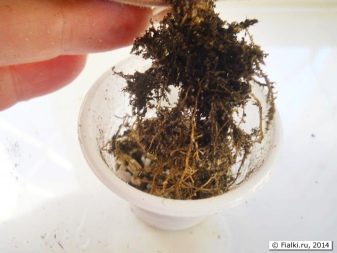
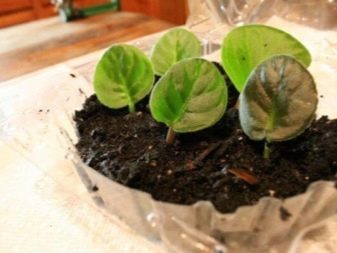
Temperature conditions
Ideal temperatures for the Sea Wolf range from +20 to + 24 ° С. Young plants feel great in hotter conditions, in contrast to adults, for which a temperature of 20 ° is considered ideal. With the onset of winter cold weather, the plant will have enough 16 ° warm. Drafts should be avoided at any time of the year.
It should be noted that they negatively affect the condition of all plants. If the windowsill gets very cold during the cold season, protect the roots of the plants with plywood or a wooden pot holder.

Light
A flowering plant loves natural light. The best place to place it is a windowsill on the east or northwest side. You can also put a flower pot on the south side, but make sure that the direct rays of the sun do not fall on the violet. During the short daylight period, artificial light sources are indispensable. The violet needs 13-14 hours of lighting.
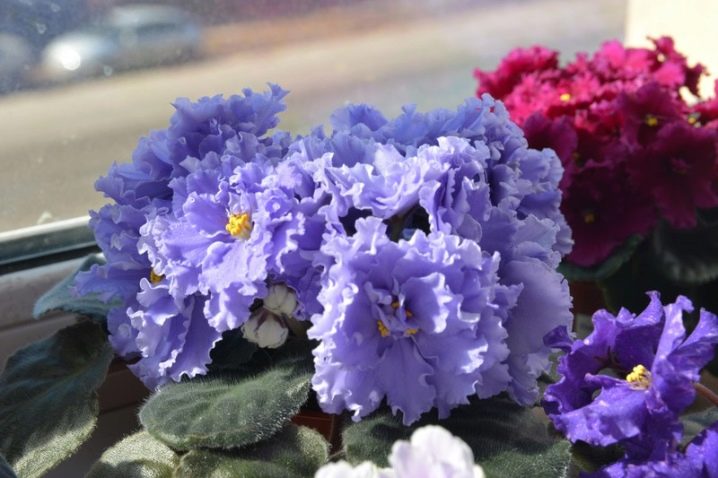
Reproduction
There are several ways to propagate a plant:
- seeds (the most difficult option, therefore it is used very rarely);
- children;
- leafy cuttings;
- vegetative methods.
The second method of reproduction is used when the plant becomes cramped due to the formation of a large number of children. In this case, the flower should be carefully removed from the container so as not to damage the root system, to separate the roots of the rosettes from the mother plant and plant them in pots. The process of transplanting violets is tolerated without problems even during the period of active flowering.


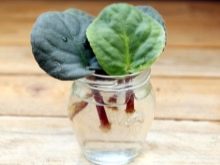
How to care?
Watering
The flower needs periodic watering. The soil must be properly moistened so that water does not get on the leaves and flowers of the plant. To do this, the pot is placed in clean, settled water (you need to settle for at least 2 days) for 10-15 minutes. You can also use a sharp-nosed watering can to direct the water directly to the ground, bypassing the leaves. With the arrival of winter, the procedure is recommended to be carried out in the afternoon, and in the spring and summer the morning time is considered the best. Moisten the soil as the top layer dries.
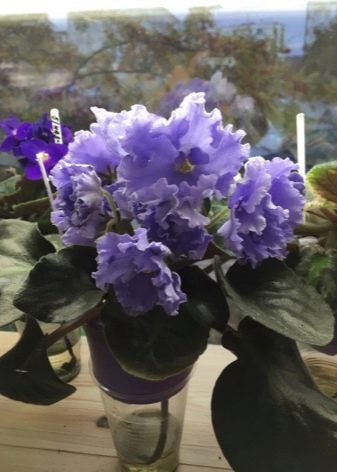
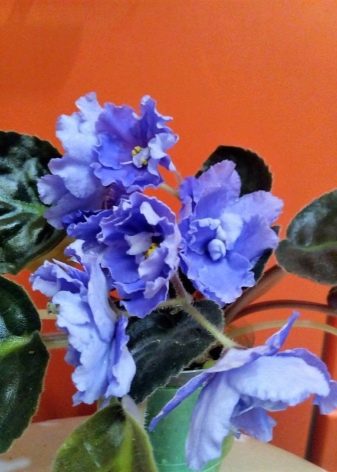
Transfer
For the comfort and good health of violets, the substrate should be replaced once a year, while the container does not need to be changed. They acquire a new pot only when the size of the flower increases and it becomes cramped. When changing containers, choose a pot that is 2 cm larger. The ideal time for transplanting is the first month of spring. When transferring a flower, do not destroy the earthy ball, otherwise damage the root system.
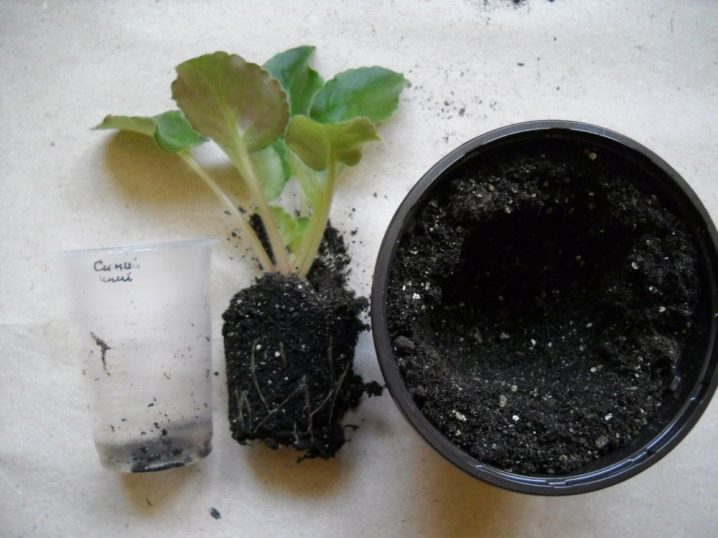
Top dressing
Each plant needs additional nutrients. Violet gives a lot of energy to budding and flowering. During the growing season, fertilizing is applied once every 7-10 days. It is best to use liquid complex formulations designed specifically for indoor violets. They are added to the water for irrigation, taking into account the instructions for use.

Diseases and pests
The following factors are the cause of the appearance of diseases:
- non-compliance with temperature standards;
- excessive or insufficient watering;
- little lighting;
- drafts;
- diseases of plants in the vicinity;
- too large container sizes: this can provoke rotting of the plant rosette;
- damage during transplantation or reproduction;
- lack or oversaturation of fertilizers, as well as incorrectly selected composition.

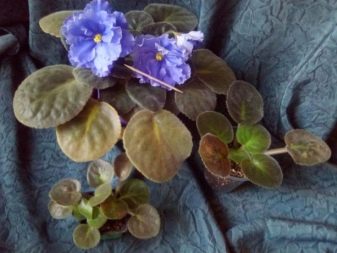
There are a number of diseases typical of violets, which are caused by these factors or attacks from insects.
- Scorms. They live in folds between leaves, as well as on young peduncles. Red and brown marks appear on the plant in the affected areas. The drugs "Atellika" or "Fitoverma" will help to cope with the problem.
- Woodlice. These small parasites appear with excessive moisture. Their maximum size is 1.5 cm. In this case, the earth and the flower are treated with acaricides.
- Fusarium. Another ailment that develops due to severe waterlogging of the earth. Leaves and flowers begin to wither gradually. The best way to restore beauty and health to the flower is to spray the plant with foundation.
- Rust. Brown spots appear on the leaves. The violet is saved with a solution of 1% bordeaux acid.
- Gray rot. If you notice on the violet the presence of a small cannon resembling ash, then the plant is sick with gray rot. Watering with cold water and the use of special preparations will help.

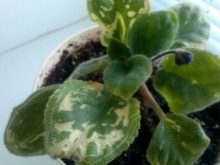
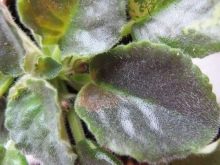
For an overview of the violets of the Sea Wolf variety, see the video below.































The comment was sent successfully.